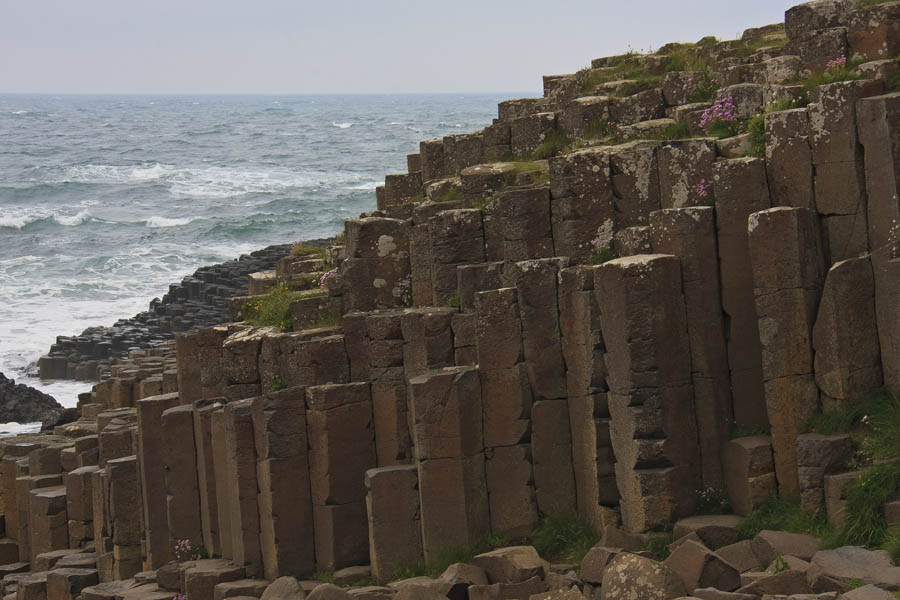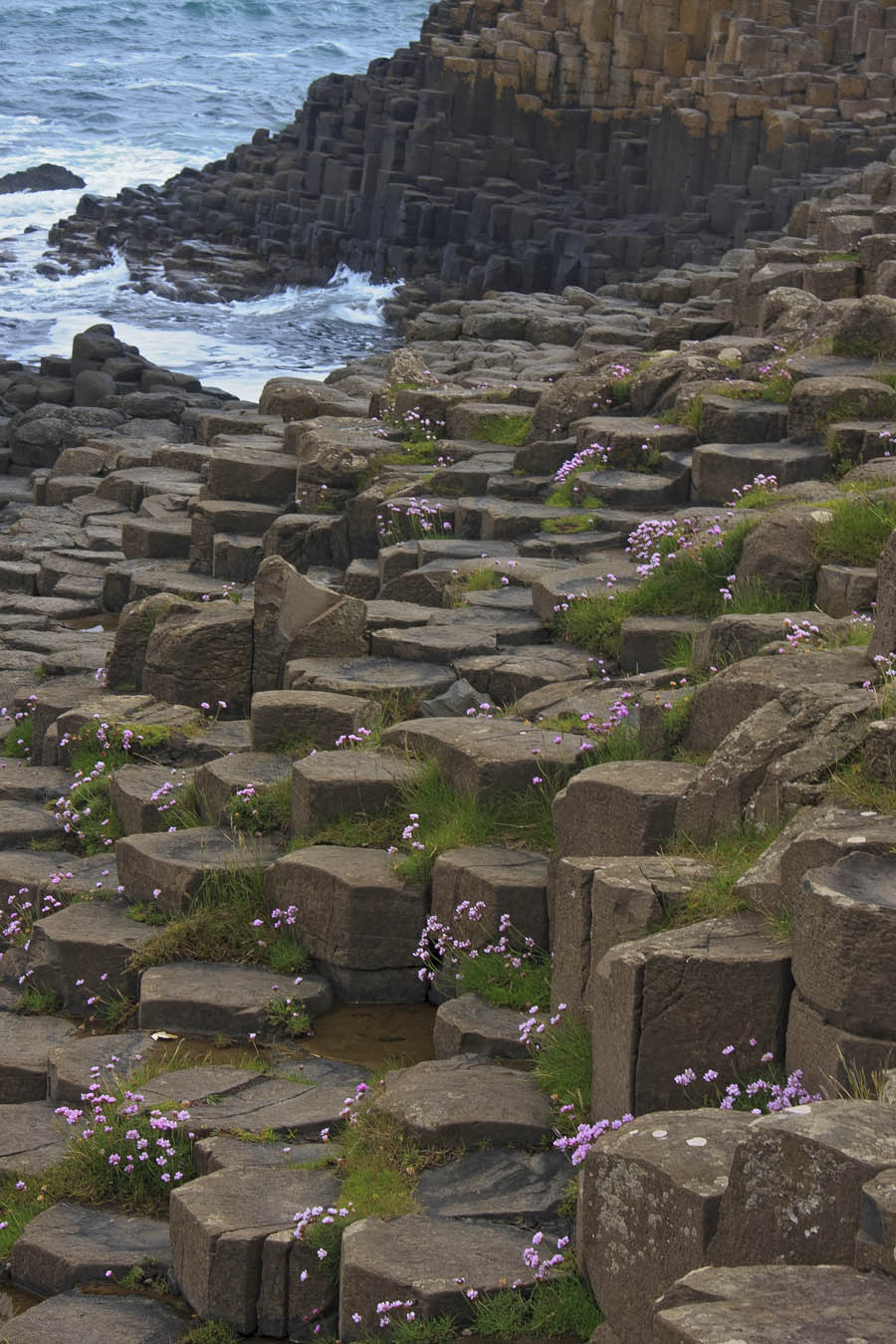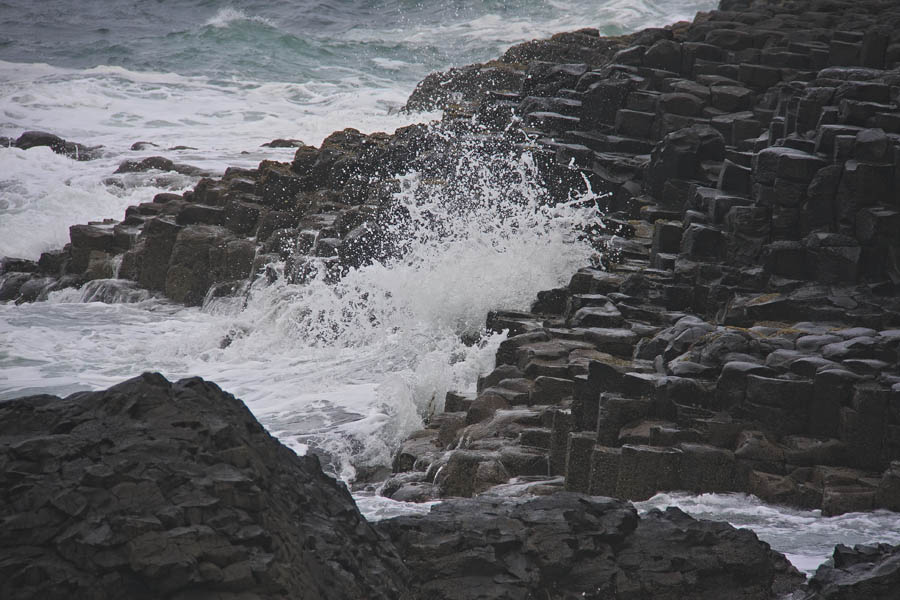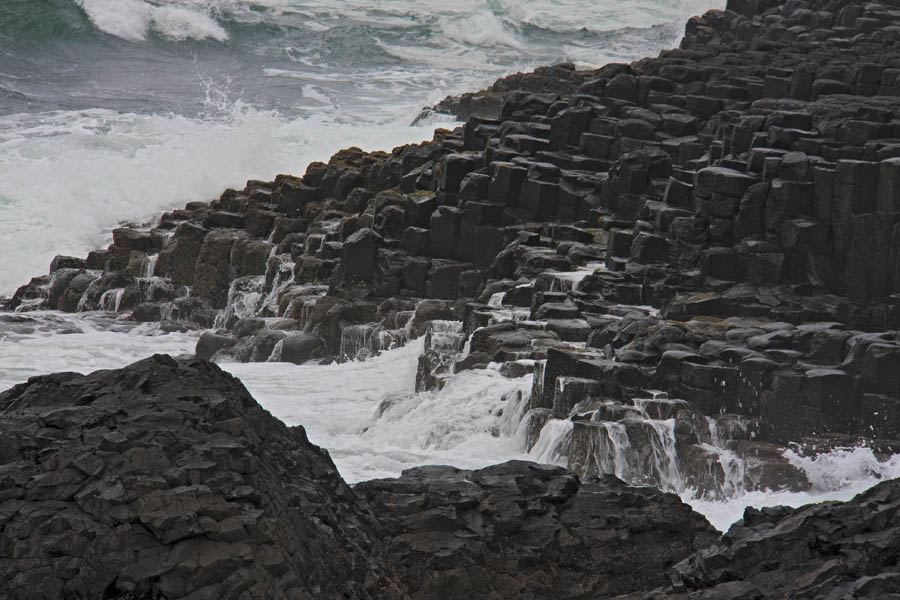In late May, we traveled to Ireland with friends Bev and Hank Bryce and Carla and Hans Helder to play some golf and tour the Emerald Isle. We began our travels in Northern Ireland, part of the United Kingdom and a separate country from the Republic of Ireland to the south. One of our first destinations was the north coast, where we visited the Giant’s Causeway.
The Giant’s Causeway is an area of about 40,000 interlocking basalt columns, the result of an ancient volcanic eruption. It was declared a World Heritage Site by UNESCO in 1986, and a National Nature Reserve in 1987 by the Department of Environment of Northern Ireland. I was pleasantly surprised to discover this unique and very picturesque area and a little chagrined that I was previously unaware of its existence.
Some 50 to 60 million years ago,the area was subject to intense volcanic activity, when highly fluid molten basalt intruded through chalk beds to form an extensive lava plateau. As the lava cooled rapidly, contraction occurred. Horizontal contraction fractured in a similar way to drying mud, with the cracks propagating down as the mass cooled, leaving pillar-like structures, which are also fractured horizontally into “biscuits”. The size of the columns was primarily determined by the speed at which lava from the volcanic eruption cooled. The extensive fracture network produced the distinctive columns seen today. The tops of the columns form stepping stones that lead from the cliff foot and disappear under the sea. Most of the columns are hexagonal, although there are also some with four, five, seven or eight sides. The tallest are about 12 metres (39 ft) high, and the solidified lava in the cliffs is 28 metres thick in places. Perhaps the following pictures will better describe how it looks.


I was fascinated by the waves crashing onto the stepped shoreline and how the receding surf cascaded down the steps back into the sea. I took a number of photographs in an effort to capture the crashing and receding and ultimately succeeded with the following two shots.


I conclude today’s post with a slideshow containing a number of shots that further convey the natural beauty of the Giant’s Causeway. Click on the right side of the images to advance; on the left to back up.
Do you wonder about the source of the name “Giant’s Causeway”?
According to legend, the columns are the remains of a causeway built by a giant. The story goes that the Irish giant,Finn MacCool was challenged to a fight by the Scottish giant Benandonner. Finn accepted the challenge and built the causeway across the North Channel so that the two giants could meet. In one version of the story, Finn defeats Benandonner. In another, Finn hides from Benandonner when he realizes that his foe is much bigger than him. Finn’s wife, Úna, disguises Finn as a baby and tucks him in a cradle. When Benandonner sees the size of the ‘baby’, he reckons that its father, Finn must be a giant among giants. He flees back to Scotland in fright, destroying the causeway behind him so that Finn could not follow. Across the sea, there are identical basalt columns (a part of the same ancient lava flow) at Fingal’s Cave on the Scottish isle of Staffa, and it is possible that the story was influenced by this.


A very mystical place! I see that it has not changed since 2003:-)